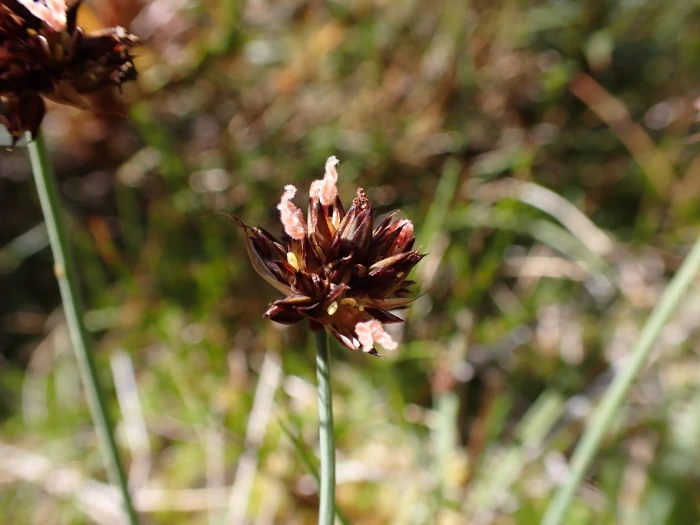Falcate Rush
(Juncus falcatus)
Falcate Rush (Juncus falcatus)
/
/

Nina Kerr
CC BY 4.0
Image By:
Nina Kerr
Recorded By:
Copyright:
CC BY 4.0
Copyright Notice:
Photo by: Nina Kerr | License Type: CC BY 4.0 | License URL: http://creativecommons.org/licenses/by/4.0/ | Rights Holder: Nina Kerr | Publisher: iNaturalist | Date Created: 2023-12-30T10:00:47-08:00 |















Estimated Native Range
Climate Requirements for Broken Arrow, Oklahoma
| This Plant | Your Site | Plant Suitability for Your Location | ||
|---|---|---|---|---|
| • Precipitation | 16" - 162" | 41" | Aquatic | Aquatic |
| • High Temp. | 50°F - 89°F | 93°F | Your summers may be too hot for this plant. | Too hot |
| • Low Temp. | 6°F - 44°F | 25°F | Your winter temperatures are normal for this plant | Excellent |
This plant should grow well at your location with about N inches per year (Y minutes per month) of irrigation.
Summary
Juncus falcatus, commonly known as Falcate Rush, Sickle-Leaved Rush, or Sickle-Leaf Rush, is a perennial herb that thrives in wetland habitats such as marshes, wet meadows, and along stream banks. It is native to the West Coast of North America, including the Aleutian Islands. This rush typically reaches a height of 1.5-3 feet (0.46-0.9 meters) and has a clumping growth habit with narrow, arching leaves that give it a distinctive, grass-like appearance.
Falcate Rush is valued for its ability to thrive in wet conditions and is often used in rain gardens, wetland restoration projects, and as a natural method for stabilizing stream banks. Its green or brown flowers are inconspicuous, blooming in the summer, and are not the main attraction. Instead, its foliage and form provide texture and interest in water features or boggy areas of the garden. It requires full sun to part shade and prefers slow-draining clay, loam, or sandy soils that retain moisture. While it is not particularly prone to diseases, it can spread aggressively in ideal conditions, potentially becoming invasive in some areas outside its native range. Gardeners should be mindful of its growth habit when planting to ensure it does not overtake other plants.CC BY-SA 4.0
Falcate Rush is valued for its ability to thrive in wet conditions and is often used in rain gardens, wetland restoration projects, and as a natural method for stabilizing stream banks. Its green or brown flowers are inconspicuous, blooming in the summer, and are not the main attraction. Instead, its foliage and form provide texture and interest in water features or boggy areas of the garden. It requires full sun to part shade and prefers slow-draining clay, loam, or sandy soils that retain moisture. While it is not particularly prone to diseases, it can spread aggressively in ideal conditions, potentially becoming invasive in some areas outside its native range. Gardeners should be mindful of its growth habit when planting to ensure it does not overtake other plants.CC BY-SA 4.0
Plant Description
- Plant Type: Grass
- Height: 1.5-3 feet
- Width: 1-2 feet
- Growth Rate: Moderate
- Flower Color: N/A
- Flowering Season: Summer, Fall
- Leaf Retention: Deciduous
Growth Requirements
- Sun: Full Sun, Part Shade
- Water: High
- Drainage: Slow, Standing
Common Uses
Erosion Control, Low Maintenance, Water Garden
Natural Habitat
Native to wetland habitats such as marshes, wet meadows, and stream banks
Other Names
Common Names: Sickle-Leaved Rush , Sickle-Leaf Rush
Scientific Names: Juncus falcatus , Juncus falcatus var. falcatus
GBIF Accepted Name: Juncus falcatus